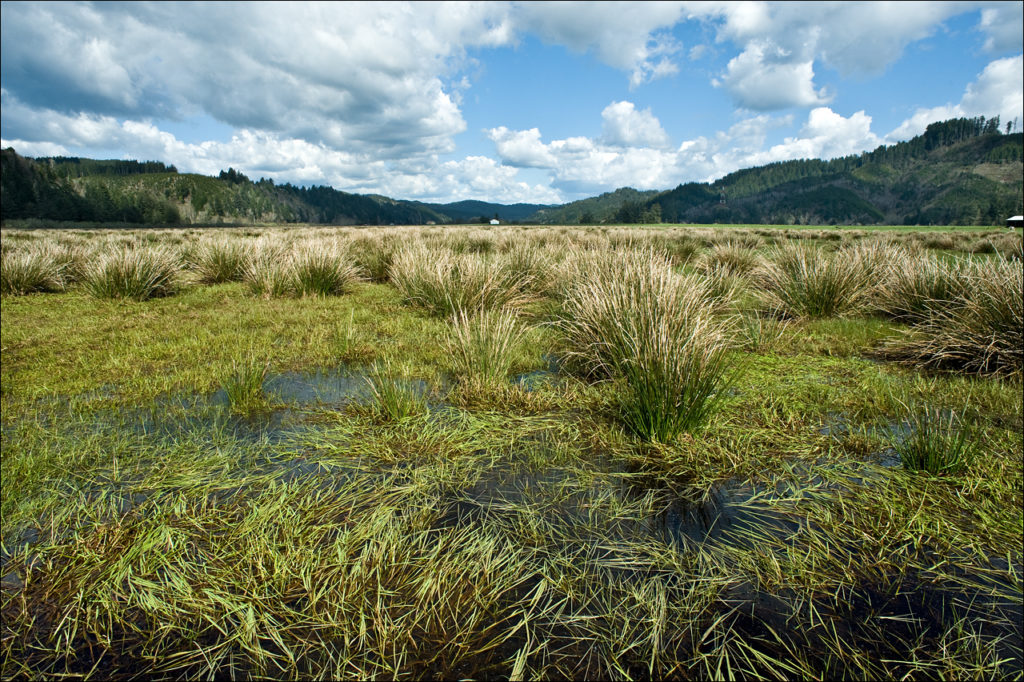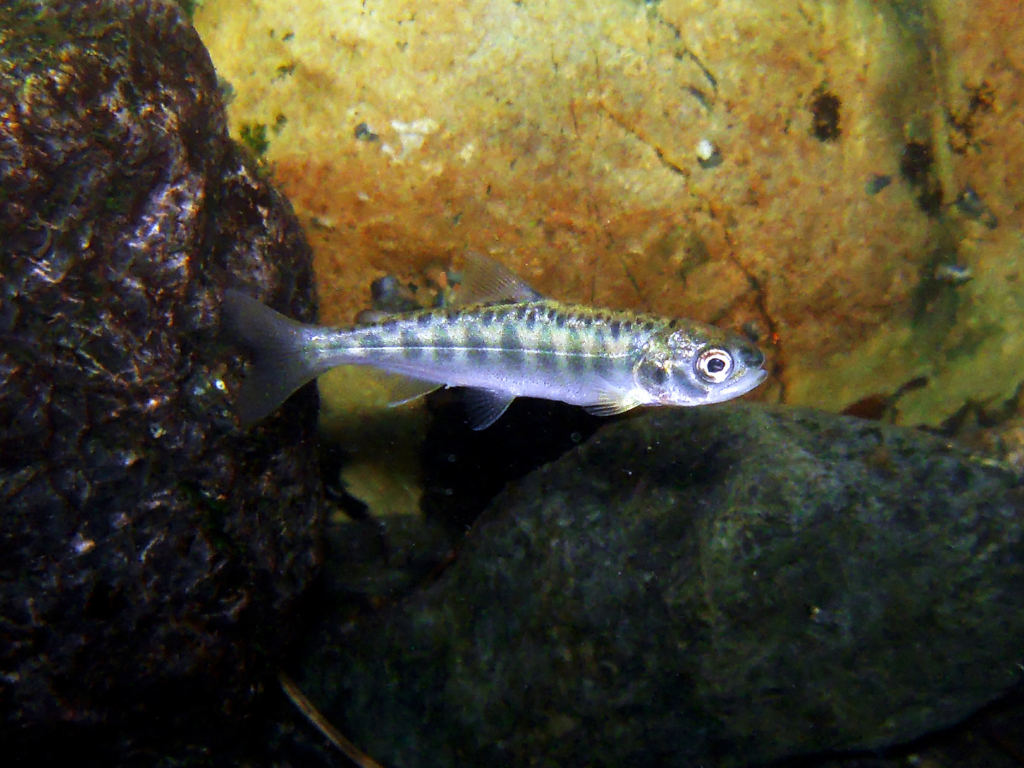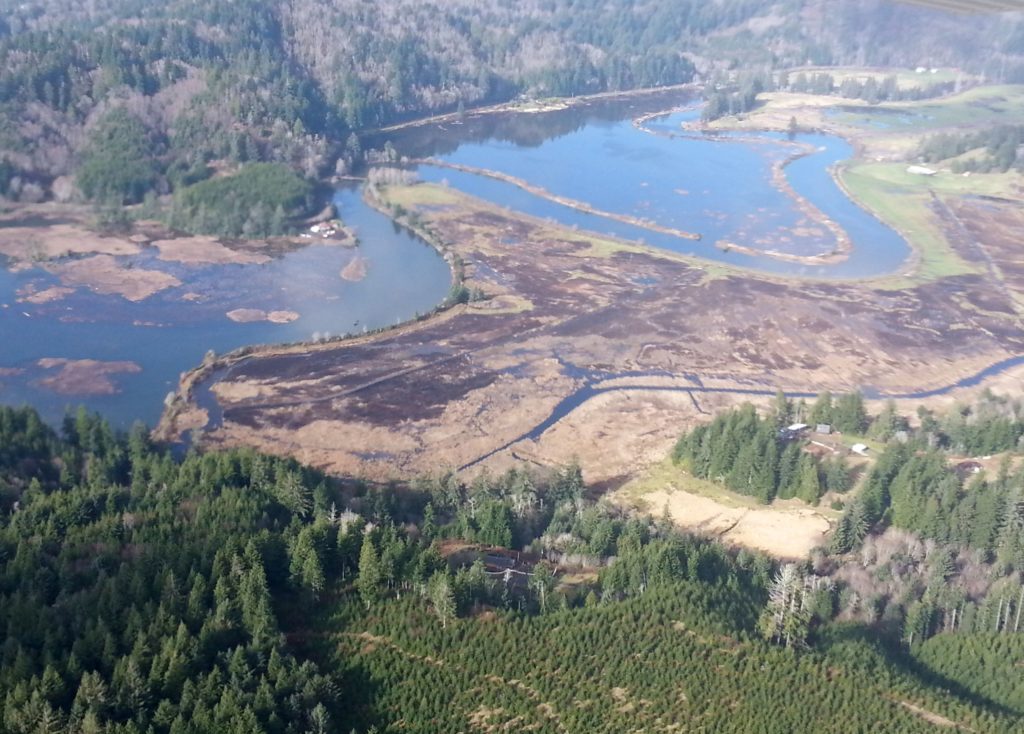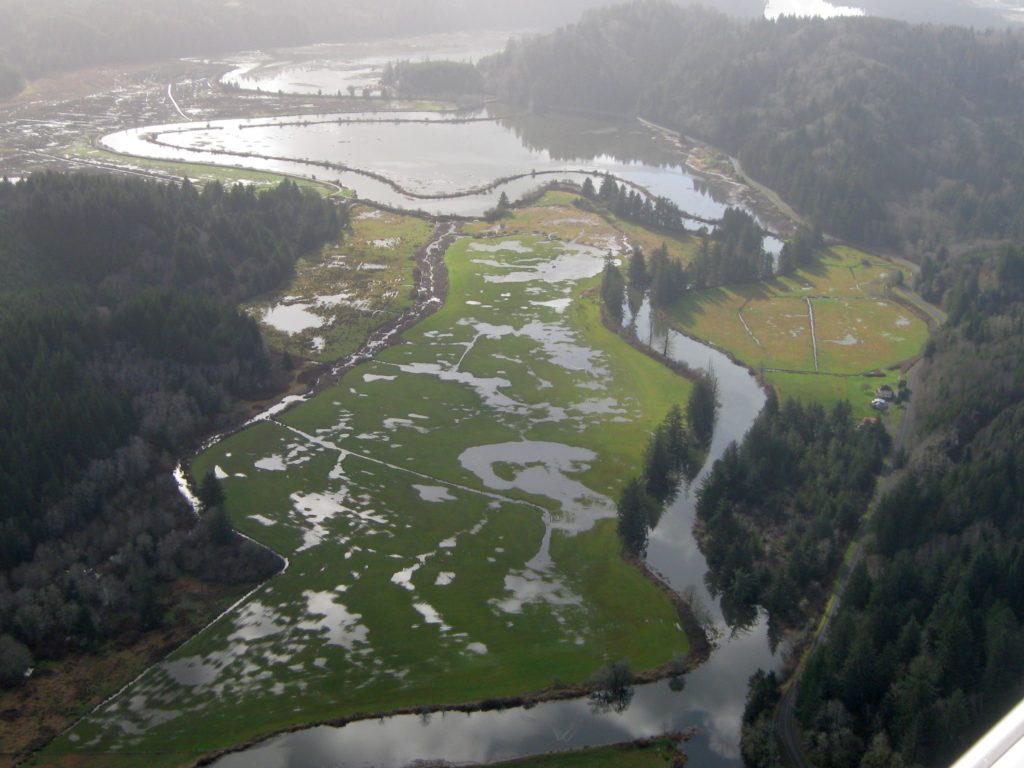
By Amber Due, Outreach and Communications Intern
Tidal wetlands are marshy areas found along rivers, coasts, and estuaries that regularly flood and drain with tidal movements. This brackish transition zone between ocean and freshwater creates a unique habitat with dynamic ecosystems that host incredibly diverse plant and animal life.
Tidal wetland habitats today are greatly reduced in size due to the creation of embankments and tidal gates built to prevent tidal flooding from the sea. This action increased available land for profitable human uses, such as housing development and agriculture. However, building these dikes and draining these lands for cattle ranching and other agricultural and human uses has led to the loss of over 50% of Oregon’s historic tidal marsh areas and over 90% of Oregon’s historic forested and scrub-shrub tidal wetlands. Many of these diked and tide-gated lands are becoming less viable for cattle ranching and agricultural use due to the loss of nutrient value in the soil and land subsidence from the weight of the animals on the soft ground. After fighting the natural floodwaters for years, many ranchers on the Oregon coast are yielding to the tides and supporting the return of the land to its natural state.
Restoring tidal wetland areas is a critical step in restoring our earth and its systems. Tidal wetlands can slow and absorb floodwaters, helping protect coastal communities from sea level rise, due to climate change. Tidal wetlands also create tidal channels that support massive numbers of aquatic insects, an important food source for salmon and other wild fish. These slow-moving channels also provide refuge between rivers and the sea, where young salmon can make the physiological transformation from fresh water to salt water in preparation for the ocean stage of their lives.

Juvenile Coho salmon rely on tidal wetlands for food and safety as they transition from fresh to salt water.
Carbon is Key in Tidal Wetland Benefits
Tidal wetlands areas are unmatched in their ability to sequester carbon. According to the International Union for Conservation of Nature, coastal habitats may sequester 50 times more carbon than tropical forests! Carbon captured by tidal wetlands, our oceans, and other coastal ecosystems is known as “blue carbon”.
Tidal wetlands along our coast absorb and hold blue carbon from the atmosphere, acting as a carbon sink. These coastal systems sequester carbon at a much faster rate than our forests and can continue to do so for millions of years. The blue carbon taken up by these ecosystems is largely stored in the sediment below the plants, as well as in the unique vegetation found in these areas. Research has shown that carbon found in coastal soils has often been stored there for thousands of years.

North Fork Marsh: One of the few salt marshes without dikes along the lower north fork of the Siuslaw River, this special area provides a window into what our tidal marshes and estuaries could look like with community investments in land protection and restoration. Here, native tidal marsh plant communities dominate the site, including old-growth Sitka spruce, grasses, and a variety of scrub shrubs. Historic use of this estuary by Coho salmon, Chinook salmon, Pacific lamprey, and sea-run cutthroat trout has been documented, and present use is likely.
Coastal habitat conservation is essential for helping tidal wetlands sequester blue carbon effectively, as well as to keep that carbon in the ground. When these ecosystems are degraded or destroyed, enormous amounts of carbon are emitted back into the atmosphere and become sources of greenhouse gasses. Protection projects such as North Fork Marsh near Florence, OR, help to ensure that these critical areas on Oregon’s coast are protected for the future of the land, water, and community.
In the coming years, McKenzie River Trust will be focusing more attention on the protection and restoration of tidal wetlands on Oregon’s central coast. To adapt to our changing environment, we must make smart investments today for long-term solutions. Restoring tidal wetlands on the Oregon coast presents an opportunity to make a landscape-scale impact for a better climate future for all Oregonians to enjoy.

